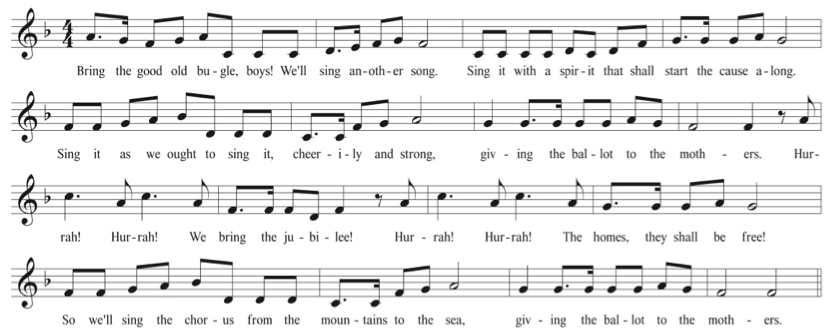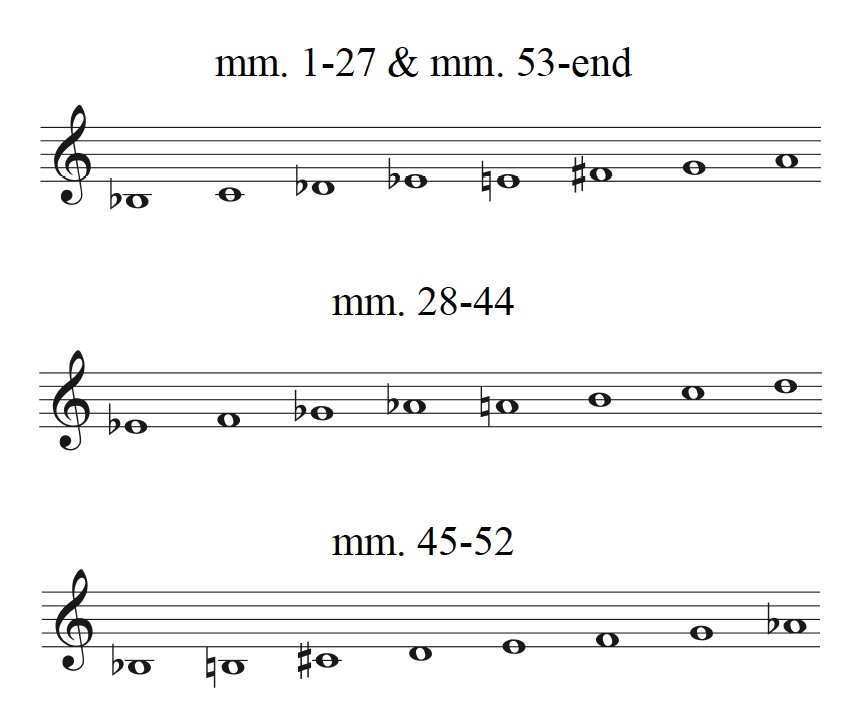Works for Young Concert Band (Grade 1-4)
NEW!
Let Me Sing You to Sleep, 2023 (Grade 3, 5:00)
Commissioned by the Florida Bandmasters Association for the 9-Star Honor Band
Program Notes:
Let Me Sing You to Sleep is based on a tune I used to hum to my newly adopted puppy. She was a rescue and a little shy, overwhelmed by her time in a shelter. When I first brought her home she would huddle in the corner of her kennel. I couldn’t let her fall asleep like that, so I’d coax her out, rock her on my lap in a blanket, and hum this tune to her until she calmed down enough to sleep peacefully. I’ve never forgotten how good it felt to protect my new friend and reassure her that her life was going to be better, especially since she became my fierce protector, too!
The flutes whisper and the clarinets and saxophones hum soothingly in the beginning and ending. The middle section increases tempo and volume, but the flute returns to the warmth and safety of the opening, just in time for the sleeper to pass into dreams.
Awakenings, 2002 (Grade 3, 5:00)
Program Notes: Awakenings was commissioned by the International Center for New Music at Central Michigan University. Directed by David Gillingham and Nico Schuler, the ICNM is dedicated to the creation, performance, and research of new music in schools.
In keeping with the ICNM's mission, Awakenings exploits a 20th century tonal system not commonly found in the repertoire for younger bands: the octatonic collection. Also known as a diminished scale, it is a series of alternating whole and half steps (starting with either a whole or half step), totaling eight pitches. Common in the music of Bartok, Stravinsky, and Messiaen, as well as in jazz improvisation and film scores (including Danny Elfman's), the appeal of an octatonic collection lies in its unusual combination of available sonorities.
Ballad for Aisha, 2004 (Grade 3, 4:30)
(Program Notes by Tom Dvorak): Ballad for Aisha was commissioned by Linda and Thomas Dvorak in honor of their niece, Aisha Greene. The premiere performance was conducted by Linda Dvorak with the University of Wisconsin Milwaukee Youth Wind Ensemble I on May 7, 2006 at Bader Concert Hall on the University campus.
In addressing the musical fabric of the piece, we asked the composer to write music with a gentle flow, with singing lyricism, filled with the soft timbres of keyboard mallet instruments, and intermingled with musical climaxes as one might experience in musicals, all mirroring Aisha’s gentle and warm personality, and her love for singing and listening to Broadway shows, especially Annie. The outcome of Kim Archer’s craft could not have been more perfect.
Aisha, like so many young children, loves music and sings constantly. She is learning how to play the recorder and looks forward to learning other instruments. Our goal was to share this commissioning with the extraordinary talents of the Wisconsin high school musicians of the University of Wisconsin Milwaukee Youth Wind Ensemble I. It is in effect, a sharing of music written for youth, performed by youth.
Through this commissioning, we hope that the lives of young people will be touched in a special way, just as Aisha and the Youth Wind Ensemble have touched our lives in a special way.
Beacon, 2013 (Grade 3, 5:00)
Program Notes: Beacon is written in memory of Dr. James Croft (1929-2012), Florida State University Director of Bands Emeritus. He was a champion of music education, wind bands, and conducting. He was also one of my first mentors: an impeccable model of artistry and pedagogy, passion and kindness. He set high standards of quality and creativity for me as a neophyte composer that have taken more than two decades to begin to reach. However, like generations of his students, I will always be grateful to have had Dr. Croft’s challenges and praise. Mine will be a career well spent, ever-pursuing the beacon of musicianship he left out on the horizon.
The Devil’s Workshop, 2009 (Grade 2, 2:00)
Program Notes: One of the things that disturbs me about young band music is that it is often quite simplistic and conservative, and it is understood that some instruments (first trumpet, alto sax, etc.) will virtually always have more interesting and challenging parts than others (tuba, euphonium, second clarinet, etc.). This sells children short! They can perform and understand a great deal more than most of their literature encourages.
Thus, when Jennifer Korak asked me to compose a work for her band, I resolved to make it something suitably interesting and challenging, but ultimately accessible and fun. I asked which skills or techniques she most wanted to develop with her students, and she mentioned chromatic scales. I realized it might be difficult to keep a traditional Grade 2 rating on a work including chromaticism, so from the finished score, I extracted a series of unison ensemble exercises. These not only challenge every member of the band to learn the melody and other significantmusical elements, but also help them to hear how everything fits together in performance. Jennifer tells me that she has never seen students so cheerfully and consistently work on chromatic scales!
The title is based on the two most prominent harmonic components of the work. Tritones were, in ancient times, referred to as the 'devil’s interval.' Chromatic scales were likewise seen as evil sounds. This, combined with the goofy character of the music and the mischievous percussion sounds, made me think of a playful little devil puttering around in his workshop on a Saturday afternoon.
Give the Ballot to the Mothers, 2019 (Grade 3.5, 5:00)
Program Notes: Rebecca Naylor Hazard, founder of the Woman Suffrage Association of Missouri, wrote the lyrics to “Give the Ballot to the Mothers” in 1889, set to the tune of “Marching through Georgia.”

Hazard went on to serve one term as the president of the American Woman Suffrage Association, which included both men and women in its advocacy for women’s right to vote.
This setting alludes to the many enthusiastic marches and rallies women of the late 1800s and early 1900s staged in their campaign to win the right to vote. Their struggle was long and difficult, sometimes resulting in violence, but their message was always hopeful and positive.
Goonwad, 2020 (Grade 3, 3:00)
Commissioned by Fletcher Middle School in Palo Alto, CA
Sample Prep Exercises (included with the score)
To facilitate teaching new concepts, the work comes with unison exercises transposed for each instrument. The exercises also introduce the important themes in the work, so everyone gets a chance to play the "cool" parts.
Program Notes: "Goonwad" is a mischievous introduction to asymmetric meter (7/8 and 5/8) and octatonic scales. Normally that might sound too complicated for a young band, but it's surprising how user-friendly advanced concepts can be. The title is the name my youngest sister calls me when she finds out how old my cell phone is, or that I'm not using the latest streaming platform, or that I haven't heard of the latest technology: "You're such a goonwad! This stuff is easy and it's cool -- let me show you."
Grind, 2019 (Grade 4, 3:15)
Commissioned by the MBDA (MN Band Directors Association) Young Band Literature Session Committee and Partners
Sample Prep Exercises (included with the score)
To facilitate teaching new concepts, the work comes with unison exercises transposed for each instrument. The exercises also introduce the important themes in the work, so everyone gets a chance to play the "cool" parts.
Program Notes:
Grind /ɡrīnd/ verb: to rub or cause to rub together gratingly
noun: a crushing or grating sound or motion
slang: when an individual pushes him/herself to attain a goal, or
having a good work ethic and being good at what you do
Music for younger bands tends to shy away from dissonance. The conventional wisdom seems to be that less experienced students either won’t like dissonance or won’t be able to perform it. I’ve always found that silly, given that a lot of popular music for movies and games relies heavily on dissonance, particularly in low winds and brass. Avoiding dissonance sells students short.
Likewise, younger band music tends not to include significant passages of sixteenth notes – again, particularly in low winds and brass. How else will students learn how to do this, maintaining a steady tempo and clear articulation, if their music avoids it?
“Grind” refers to the crunch of dissonance throughout the work. It is supposed to grate – that’s half the fun of having dissonances to lean into! These are spelled and voiced to support younger players.
“Grind” also refers to the driving pattern of sixteenth notes that is established in the first measure and then passed around the band, relentlessly, all the way to the end. The flexible tempo supports both younger and more confident players.
Most of all, “Grind” refers to the challenge of asking a younger band to tackle these concepts – to grind through them to success.
The Hour of Wolves, 2003 (Grade 4, 4:00)
Program Notes: The Hour of Wolves is the third installment of an unofficial "Lord of the Rings" triptych. The title is based on a line of dialogue from the third film, when the king of the decimated Western army gives a speech at the enemy’s gates, hoping to rally his troops one last time: "There may come a time – an hour of wolves and shattered shields – when the Age of Men comes crashing down, but it will not be this day!" The image of an "hour of wolves" struck me as particularly vivid and dark, well-suited for a work that exploits the harmonic minor scale, deep timbres, and occasionally violent rhythmic gestures.
Hymn to the Dawn, 2003 (Grade 2, 3:00)
Program Notes: Hymn to the Dawn was originally the second movement of a work for brass quintet. It was composed in memory of Charlie Carter, Staff Arranger for the Florida State University Marching Chiefs and one of my first composition teachers. Charlie became seriously ill while I was at graduate school. I was reluctant to face the severity of his illness and hesitated to call him in the hospital; as a result, he passed away before I had a chance to say goodbye. Although the title reflects moving forward, the music is meant to reflect the unresolved nature of my relationship with Charlie.
In the Gathering Dark, 2003 (Grade 3, 3:20)
Program Notes: In the Gathering Dark is the first installment of an unofficial "Lord of the Rings" triptych. The title refers to a moment in the second film where, as two massive armies brace for a cataclysmic battle, a narrator reminds the audience that "in the gathering dark, the Ring’s power continues to grow." This struck me as a particularly vivid image: the gradual descent of darkness and dread. The music is largely minimalist (a pulse-based style developed by John Adams, Philip Glass, Steve Reich, and others), with explosive moments.
Kings of Old, 2003 (Grade 3, 5:10)
Program Notes: Kings of Old is the second installment of an unofficial "Lord of the Rings" triptych. Originally titled To Look Upon the Kings of Old, it is an allusion to a line of dialogue in the first film, where the future king of the Western realm passes by boat through a landscape populated by enormous monuments to past monarchs. He says to another character, "Long have I desired to look upon the kings of old." I was struck by the sense that it must be wonderful to live in a world where leaders are known to be wise, benevolent, and trustworthy.
Panopticon, 2000 (Grade 4, 3:20)
Program Notes: A panopticon (literally: "all-seeing") is a Greek prison designed so that the entire interior is visible from a single vantage point. Its modal flavor is perhaps reminiscent of ancient Greek music, but the piece itself is meant to depict only a prison of the imagination, in any culture. There are three distinct musical gestures: imprisonment (which represents the bulk of the piece), a jail break sequence (starting at m. 64), and a nose-thumbing gesture at the end, as the escaped prisoner looks back on the panopticon from his/her newfound freedom.
Supervillain, 2020 (Grade 2, 2:30)
Commissioned by Fletcher Middle School in Palo Alto, CA
Sample Prep Exercises (included with the score)
To facilitate teaching new concepts, the work comes with unison exercises transposed for each instrument. The exercises also introduce the important themes in the work, so everyone gets a chance to play the "cool" parts.
Program Notes:
su·per·vil·lain (so͞o′pər-vĭl′ən)
noun: A fictional evildoer or antihero, widely popularized in comic books and comic strips, television and film, and popular culture and video games, whose extraordinary powers are used toward nefarious ends. Supervillains are the counterpart and arch-enemy of superheroes.
The seven notes of a major or minor scale might be enough for a regular villain, but such a fiendish, cunning character requires a “superscale” – in this case, the eight notes of an octatonic or “diminished” scale:

Tides, 2015 (Grade 4, 6:15)
Contact the Composer (unpublished)
The Tides -- Henry Wadsworth Longfellow (1807 -1882)
I saw the long line of the vacant shore,
The seaweed and the shells upon the sand,
And the brown rocks left bare on every hand,
As if the ebbing tide would flow no more.
Then heard I, more distinctly than before,
The ocean breathe and its great breast expand,
And hurrying came on the defenseless land
The insurgent waters with tumultuous roar.
All thought and feeling and desire, I said,
Love, laughter, and the exultant joy of song,
Have ebbed from me forever! Suddenly o'er me
They swept again from their deep ocean bed,
And in a tumult of delight, and strong
As youth, and beautiful as youth, upbore me!
